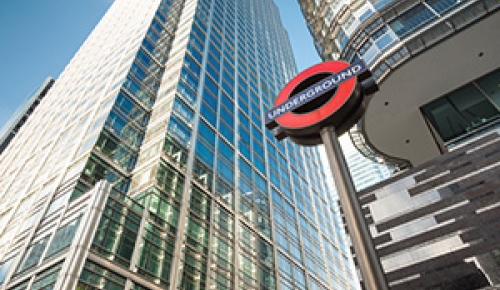Press Releases
BackGIB announces full year profit of $121.5 million
At their meeting on Saturday, 15th February 2014, the Board of Directors of Gulf International Bank B.S.C. (GIB or the Bank) approved the consolidated financial statements for the year ended 31st December 2013.
GIB recorded consolidated net income after tax of $121.5 million being $3.6 million or 3 per cent up on the prior year. The year-on-year growth in net income was achieved despite a significant increase in expenses relating to the on-going implementation of GIB's new business strategy. Net income after tax in the fourth quarter was $20.0 million compared to $20.9 million in the fourth quarter of 2012.
Year-on-year increases were recorded in all income categories, with the exception of foreign exchange and trading income. Net interest income, which at $163.1 million represented the Bank's largest income source, was $13.7 million or 9 per cent up on 2012. During 2013, loans and advances, the principal source of the Bank's net interest earnings, increased by $1.2 billion or 17 per cent. The growth in the loan portfolio reflected the leveraging of GIB's expertise to serve the Bank's large and mid-cap customers. In addition, non-interest income of $115.2 million comprised 41 per cent of total income, compared to 11 per cent in 2008. This growth illustrates the success of GIB's new strategic focus on non-asset based relationship-orientated products and services and on supporting the Bank's customer's commercial and trade finance requirements.
Fee-related income at $62.0 million was $5.3 million or 9 per cent higher than the prior year. As a result, fee-based income comprised more than one fifth of total income, reflecting further positive progress in the implementation of GIB's strategic focus on non-asset based, relationship-orientated services. Foreign exchange income was $17.4 million compared to $21.3 million in the prior year. Foreign exchange income principally comprised profits generated on customer-related foreign exchange contracts. The strong level of income reflected a focus on the cross-selling of treasury products to clients, and the introduction of new products and services to meet client needs. Trading income at $9.3 million for the year was $5.0 million lower than the prior year due to a more subdued market environment in 2013. Trading income comprised revaluation gains on investments in funds managed by the Bank's London-based subsidiary, GIB (UK) Limited. Other income of $26.5 million for the year compared to $13.3 million in 2012. However, other income included an exceptional, one off $15.3 million recovery arising on the liquidation of a structured investment vehicle that was written off during the 2007/2008 financial crisis. The remaining other income principally comprised dividends on equity investments.
Total expenses of $151.6 million for the year were 11 per cent up on the prior year. The year-on-year increase in expenses reflected on-going investment in the implementation of GIB's GCC-focused universal banking strategy. A net provision charge of $4.2 million was recorded for 2013. The limited provisioning requirement for a third consecutive year reflected the improved risk profile of the Bank, as well as prudent and conservative provisioning actions taken in previous years.
GIB's Chairman H.E. Jammaz bin Abdullah Al-Suhaimi, commented "I am pleased with the progress made in the implementation of GIB's new strategy, which aims at a total transformation of the way the Bank conducts its business and will take it into new frontiers of sophisticated banking. The strategy aims to transform GIB into a pan-GCC universal bank incorporating a unique retail bank offering. The strategy implementation has involved the restructuring of the wholesale banking activity and preparations for the launch of a new retail banking business which are now in an advanced stage."
H.E. Al-Suhaimi continued "We believe that these measures will, within a few years, achieve the levels of profitability and return on equity in line with the expectations of our shareholders. The new institution will also benefit from more diversified and stable funding, thus reducing volatility and minimising the effects of external shocks. I am confident that the Bank is well placed to take advantage of new business opportunities, continue its key role in the Kingdom of Saudi Arabia and the region as a leading financial institution, and ensure prosperity for all its stakeholders."
Dr. Yahya bin Abdullah Alyahya, GIB's Chief Executive Officer stated "We are delighted to report continued profitability growth in 2013 despite increased costs associated with the investment in the future of the Bank through new strategic initiatives. GIB's robust funding position during 2013 reflected the confidence that the Bank's customers and counterparties have in its strong ownership and financial strength. This was clearly demonstrated by a $4.0 billion or 42 per cent increase in customer deposits in 2013, which followed a $1.0 billion increase in 2012, providing a conclusive endorsement of our customers' confidence in GIB's strong financial position."
He added "GIB has been frequently recognised for its commitment to professionalism and excellence, and the very best in customer service. During 2013, additional recognition of our business achievements were highlighted in the form of further major industry awards. These awards covered the areas of investment banking, asset management, and Sharia-compliant financial services, and a special award from Malaysia's leading rating agency following GIB's establishment of a Malaysian Ringgit 3.5 billion Sukuk Al-Wakalah medium-term note programme in 2012."
Dr. Alyahya continued "Underlying GIB's financial performance was the re-affirmation of the Bank's long-term ratings by Fitch, Moody's and Standard & Poor's. Also, and importantly, the Standard & Poor's (S&P) rating agency upgraded GIB's Stand-Alone Credit Profile (SACP) from ‘BBB-' to ‘BBB' and its rating outlook from Stable to Positive. S&P's SACP represents an evaluation of the Bank on a stand-alone basis excluding shareholder support. The upgrade in the rating reflected S&P's view that there had been a significant improvement in the Bank's risk profile, as well as highlighting the Bank's strong liquidity and capital position. The rating agencies noted GIB's strong ownership and capitalisation, improved liquidity, and conservative provisioning. Such recognition constitutes a positive independent endorsement of the proactive and conclusive actions taken by GIB and its shareholders to address the challenges created by the global financial crisis."
Dr. Alyahya also highlighted "The Bank's Basel 2 total and tier 1 capital adequacy ratios at 31st December 2013 were 18.9 per cent and 16.9 per cent respectively. These are both exceptionally high by international comparison. With these strong capital ratios and as a result of the actions taken to strengthen the Bank's liquidity position, GIB is already in compliance with almost all of the Basel Committee's Basel 3 guidelines that are planned to be implemented over the next few years."
Consolidated total assets at 31st December 2013 were $21.2 billion. The asset profile at the 2013 year end reflected a high level of liquidity that is being maintained as a precautionary measure in the prevailing market environment. Placements and liquid assets amounted to $8.7 billion at the year end, representing a very high 41 per cent of total assets. In addition, investment securities, which principally comprise highly rated and liquid debt securities issued by major financial institutions and regional government-related entities, amounted to $3.7 billion. Loans and advances amounted to $8.3 billion, being $1.2 billion up on the 2012 year end level. The loans to equity ratio was a conservative 3.7 times, while the ratio of loans to customer deposits and senior term finance was a prudent 53 per cent. At the end of 2013, customer deposits, which increased by $4.0 billion over the prior year end, represented 90 per cent of total deposits. Importantly, interbank placements significantly exceed bank deposits, and as a result the Bank is a net placer of funds in the interbank market.







